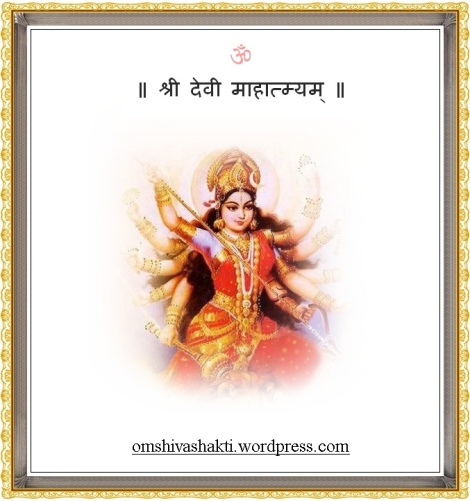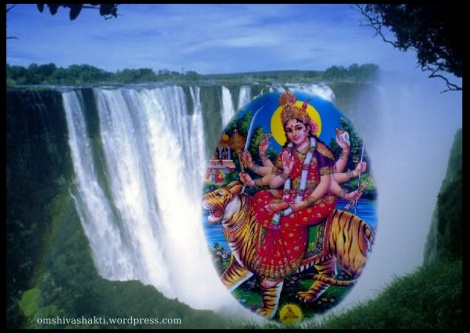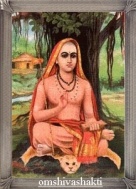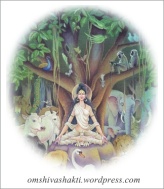|| ॐ ह्रीं ॐ ||
या देवी सर्वभुतेषु मातृरूपेण संस्थितः।।
नमस्तस्यैः नमस्तस्यैः नमस्तस्यैः नमो नमः॥
Om shri ganeshaya namha
॥ ॐ शिवशक्ति ॥
Omshivashakti
Worship of Supreme Param Atman in the form of Mother
“If God is our- father, why cannot God be our Mother! If we are the children of our heavenly Father, why cannot we be the children of our heavenly Mother!.” This rhetorical question is the basis of why Hindus recognize and accept both male and female aspects of Nature and worship the Supreme Reality in the form of Mother, Father, Brother, Sister,Friend, Master, Guru, and Savior. Thus Lord Krishna declares in the Bhagawad Gita:
“I am the Father- of this Universe. I am the Mother of this universe, and the Creator- of all. I am the Highest to be known, the Purifier, the holy OM, and the three Vedas.” (Sreemaadh Bhagvad Gita 9.17)
The worship of God in the form of Mother- is a unique Feature of Hinduism. Through the ages, the doctrine of the Motherhood of God has established a firm root in Hinduism. Today Hindus worship the Divine Mother in many popular forms such as Durga, Seeta, Kali, Lakshmi, Saraswati, Ambika, and Uma.
By worshipping God as the Divine Mother, a Hindu can more easily attribute Motherly traits to the Lord, such as tenderness and forgivingness. The natural love between a Mother- and her- child is the best expression of the Lord’s unconditional love for- us as children of God. In the most representative Hindu view, the universe is the manifestation of the creative power (shakti) of Brahman, whose essence is absolute existence, consciousness, and bliss (or in Sanskrit, sat-chi t-ananda). Since all created forms proceed from the womb of the mother, the creative power shakti) of God is recognized by Hindus as the female principle or the motherly aspect of nature. In this sense we are all children of the Divine Mother. We are contained by Her before our – manifestation and nourished by Her throughout our existence.
To a Hindu, the motherly aspect of God in nature is full of beauty, gentleness, kindness, and tenderness. When we look upon all the glorious and beautiful things in nature and experience a feeling of tenderness within us, we feel the motherly instinct of God. The worship of God in the form of Mother is a unique contribution of the Hindu child. When a devotee worships God as Divine Mother, he or- she appeals to Her tenderness and unconditional love. Such love unites the devotee with God, like a child with its mother. Just as a child feels safe and secure in the lap of its mother, a devotee feels safe and secure in the presence of the Divine Mother-.
Pararnaharnsa Sri Ramakrishna, one of the greatest Indian sages of modern times, worshipped the Divine Mother Kali during his entire life. He established a personal relationship with Her and was always conscious of Her presence by his side.
In Hinduism, Divine Mother is the first manifestation of Divine Energy. Thus with the name of Divine Mother comes the idea of energy, omnipotence, omnipresence, love, intelligence, and wisdom. Just as a child believes its mother to be all-powerful, and capable of doing anything for the child, a devotee believes the Divine Mother to be all merciful, all-powerful and eternally guiding and protecting him with her invisible arms.
The worship of God as Mother- has had a significant impact on Hinduism. The position of women in the Hindu religion is dignified because each woman is considered a manifestation of the Divine Mother. Hindus view man and woman as the two wings of the same bird. Thus, a man is considered incomplete without a woman, since “it is not possible for- a bird to fly on only one wing”
Through the worship of God in the form of Mother, Hinduism offers a unique reverence to womanhood.
Swami Vivekananda.
The Sacred Book Of Supreme Power
Sri Durga Saptasati or The Devi Mahathmya
(The Glory of the Divine Mother)
Chapter – 1 | Chapter – 2 | Chapter – 3 | Chapter – 4 | Chapter – 5 | Chapter – 6 | Chapter – 7
Chapter – 8 | Chapter – 9 | Chapter – 10 | Chapter – 11 | Chapter – 12 | Chapter – 13
INTRODUCTION TO THE DEVI MAHATHMYA
The Devi Mahathmya or the Durga Saptasati is a unique book in this world. It is the base and the root of the religion of the Saktas.
This Sacred Book is known by various names in Bharata Bhumi as Devi Mahathmyam in South , Chandi Paath in East , Devi Bhagvat in West and as Durga Saptashati in the Northern & Central parts of the country including Varanasi.
One of the eighteen Puraanas ” The Devi Puraana”composed by Bhagvan Shri veda Vyasa is also called Sreemad Devi Bhagavad.The Srimad Devi Bhagavatam, also known as Devi Purana, was composed into 12 chapters, containing 18000 verses by the great Veda Vyasa.
Shri Devi Mahathmyam is a Kamadhenu for one and all; it gives whatever man wants. It gives Bhakti in this world and Mukti afterwards. It is a powerful reservoir of Mantras from the beginning to the end. Every verse of this text is a dynamic force which acts powerfully in overhauling the nature of man.
The first verse of the text implies that the whole book is an explanation of the root of the Devi-Mantra, viz., —Hreem. The nine forms of Durga – Shailputri, Brahmacharini, Chandraghanta, Kushmanda, Skandamata, Katyayni, Mahagauri, Siddhadhatri,and Kalratri, are envisioned with the great goddess. She assumes these manifold forms of Shakti .
There are many commentaries on this text which explain it in a mystical way . These Powerfull Mantras of the Saptasati are not to be neglected by one who wishes to lead a good and peaceful life in this world.
The conception of the Infinite as Mother is not an altogether meaningless one. The Rigveda bears testimony to the fact that even in such ancient times, there was the persistent belief that the Ruler is the All-compassionate Mother. Further, Mother is the personality that appeals most to the human heart. Moreover the conception of the Divinity as Devi, Durga or Sri, is not merely a theory but a practical way of life. It is a particular view which cannot be set aside. It is as important as any school of religious belief, and is one of the most important reigning branches of Hindu religion—Vaishnavism, Saivism and Saktaism. Even a subtle philosopher cannot dispense with the conception of Sakti, for he is essentially an embodiment of Power, and he has love for power. The highest Intelligence and the most speculative metaphysics is only a manifestation of Jnana-Sakti and is not outside the range of Saktaism. Let us therefore adore and worship the Glorious Mother for the purpose of attaining Wisdom or Self-realisation!
May the blessings of Devi shower on all of us…Om ShivaShakti.
जननी जन्मभूमिश्च स्वर्गादपि गरीयसी














You must be logged in to post a comment.